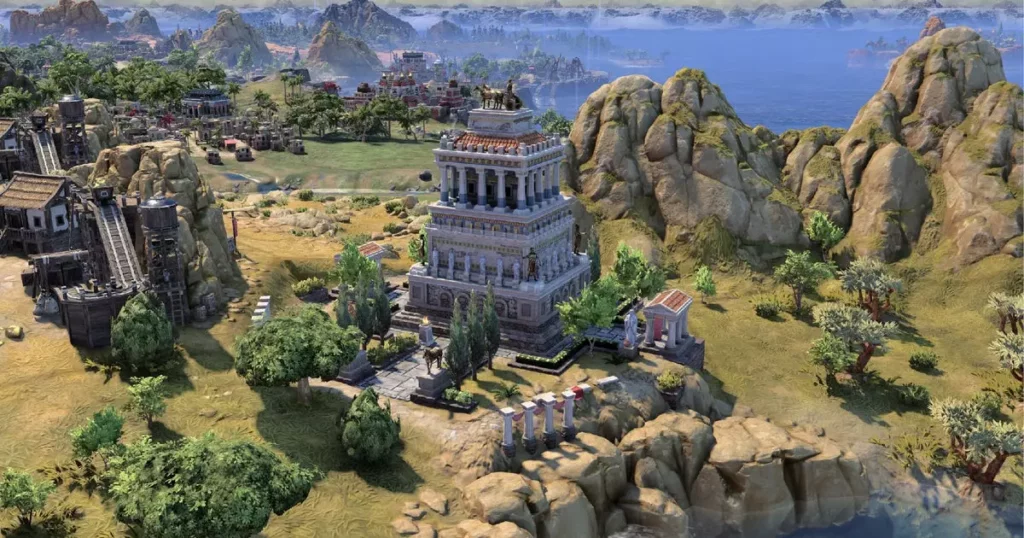The recent release of Civilization 7’s patch 1.2.4 exposes a troubling truth about modern game development: the pretense of continuous progress often masks a fundamental fragility in design. Firaxis, in their attempt to enhance the game’s interface and mechanics, embarked on a major overhaul of their UI system. While such technological advancements seem laudable on the surface, the depth of the backlash—particularly the wholesale breaking of mods—illustrates a recurring oversight: innovative progress for the sake of future convenience can undermine what players have spent countless hours shaping. The developers’ justification, that the upheaval was necessary to create a more reactive and scalable UI, reveals a flawed prioritization. Instead of focusing on stable, player-centric improvements, the emphasis appears driven by technological ambition—an ambition that forgets the essence of a living, breathing community that built the game’s success.
This incident highlights a key weakness in how developers approach updates: the assumption that behind-the-scenes restructuring automatically translates into better gameplay. It ignores the reality that a game’s enduring appeal resides less in its backend architecture than in its ability to maintain player trust and stability. When updates break mods—integral to the experience for many dedicated players—they do more harm than good, eroding goodwill and raising questions about the value placed on community input. This pattern indicates a deeper need for cautious innovation that respects existing systems rather than reckless redesigns that destabilize the stability players rely on.
The Myth of Balance and the Cost of Nerfs
While mod-breaking technical changes grabbed headlines, the substantive gameplay adjustments reveal a different, perhaps more insidious problem: a pervasive misunderstanding of game balance. Firaxis’ decision to nerf previously dominant wonders like the Gate of All Nations and the House of Wisdom betrays a desire to curtail certain pathways to victory, ostensibly to “reward diversity.” But these nerfs come across as superficial attempts to fix structural issues without addressing underlying design flaws. It is as if the developers believe that tweaking numbers will solve the game’s systemic imbalance, rather than reevaluating core mechanics.
Conversely, the buffing of structures like Petra and the Eiffel Tower underscores an inconsistent approach to balancing what is “overpowered” versus what is “underpowered.” Such adjustments appear reactionary rather than strategic, risking the creation of a superficial equilibrium that quickly becomes obsolete as players adapt. Moreover, nerfing legacy pathways suggests an approach that undervalues strategic depth in favor of simplifying the gameplay narrative—a move that ultimately diminishes the significance of skillful play, precision, and long-term planning.
The Mirage of AI Enhancement and the Real Human Cost
Firaxis’ focus on bolstering the AI’s intelligence seems commendable at face value, yet it prompts a critical analysis of what “intelligence” means in a game of this complexity. The AI, notorious for its unpredictable and sometimes inexplicable behavior, now purportedly makes more logical moves and is less prone to accepting friendship under false pretenses. While these tweaks hint at a smarter opponent, they also expose a deeper arrogance: assuming that AI can or should replicate human nuance, empathy, and unpredictability.
In the real world, leaders—be they in government or private enterprise—are often judged not by their calculations alone, but by their ability to inspire trust, rally allies, and adapt creatively to unforeseen circumstances. The game’s revised AI may be better at following predefined rules, but it remains incapable of capturing the dynamism that makes human interaction meaningful. This reveals a broader complacency among developers: the belief that technological fixes can substitute for genuine understanding of game pacing and strategy. It’s a false comfort that distracts from the more pressing need to craft gameplay that rewards real skill and strategic foresight.
The Political Underpinnings of a Shifting Landscape
On the surface, Civilization 7’s updates can be dismissed as tweaks and polish, yet they quietly reflect a deeper ideological shift. By nerfing certain wonders and buffing others, the developers subtly influence players’ strategic choices and, by extension, their worldview. A more balanced pursuit of culture, science, or military conquest isn’t purely about game mechanics—it’s an allegory for real-world policy debates. The move to “rebalance” the game often echoes contemporary political efforts to regulate, limit, or promote certain narratives over others, for better or worse.
As a center-right liberal, I see this rebalancing as indicative of a desire to foster resilience, innovation, and strategic depth. But when overreach occurs—such as over nerfing iconic structures or trying to force a uniform way of achieving victory—it risks stifling creativity and individual agency. These updates, in their pursuit of fairness, can inadvertently diminish the very human element that makes the game compelling: the distinctiveness of each civilization’s story, the ingenuity of player choice, and the nuanced dance of diplomacy and conflict.
The 1.2.4 patch to Civilization 7 illuminates the contradictions and shortcomings of contemporary game development. Behind the veneer of technological progress and balance adjustments lies an underlying tension: the struggle to reconcile innovation with stability, creativity with regulation, and community feedback with corporate ambition. As a society that values free expression, strategic foresight, and resilience, we should demand that such values inform not only how we play games but how we shape the systems—both digital and real—that govern our lives.









Leave a Reply